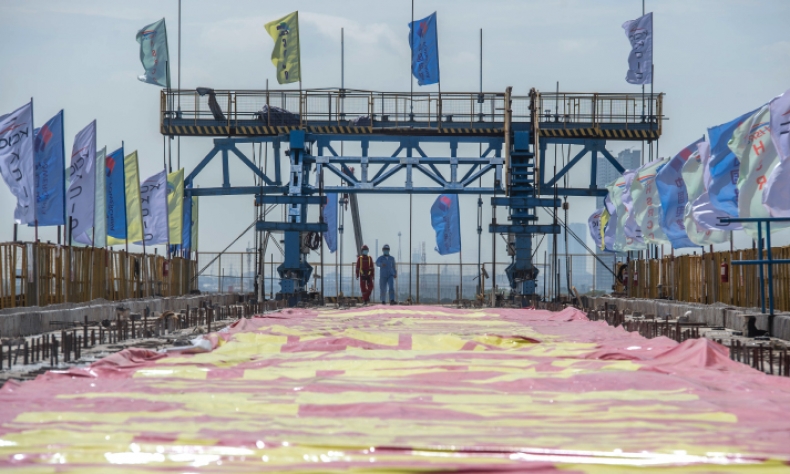New Avenues to Be Explored for Belt and Road Cooperation

The commitment to support the Belt and Road Initiative, interwoven into its foreign and economic policy since 2013, has not wavered due to temporary shocks.
At the beginning of 2021, the situation looks better in China and the rest of the world. China is striving to maintain its success in eliminating COVID-19 cases domestically and fostering immunity for its 1.4-billion population. The more the vaccination process gains ground, the more it is likely that lives will return to normalcy.
While supporting the global fight against the virus, China is also pushing ahead with Belt and Road cooperation. State Councilor and Foreign Minister Wang Yi made references to it in his press conference on the sidelines of the annual session of the 13th National People’s Congress, the country’s top legislature, on March 7.
COVID-19 may have changed the world, but the need for Belt and Road cooperation has not subsided, he said, adding, “As we pursue a new development paradigm, we will explore better pathways for Belt and Road cooperation and offer greater opportunities to Belt and Road Initiative partners… Together, we can turn Belt and Road cooperation into a journey toward common development and prosperity for all.”
He also highlighted the progress made in Belt and Road cooperation in 2020 in spite of COVID-19, mentioning projects such as the China-Pakistan Economic Corridor in Pakistan, the high-speed railway linking Indonesia’s capital Jakarta with one of its largest cities Bandung, the China-Laos Railway expected to open late this year, as well as the China-Budapest-Belgrade rail project.
The foreign minister also spoke of the initiative as a significant parameter in the development of China’s relations with Russia and African and Arab countries.
Following a year of unprecedented uncertainty and instability, when the pandemic made people-to-people exchanges impossible and construction on Belt and Road projects came to a halt for a period of time due to contagion risks, the government has taken stock of the current status of the initiative and appears confident of adding a new impulse to it.
The initiative remains a source of growth that has the potential to assist an early recovery of the world economy after the 2020 stagnation. Besides investment, the resumption of traveling will contribute to economic relief. Wang said China is developing a digital health certificate system to facilitate global travel. It would assist countries to mutually verify visitors’ nucleic acid test results and vaccination histories, leading to “a healthy, safe and regulated new order for cross-border exchanges of people.”
The two main areas where China could concentrate on cooperation in the short and medium term are the digital economy and environmental protection. China’s own investment in research and development will ensure a greater contribution of e-commerce to its growth. Other participants in the initiative are likely to be part of the digital ecosystem.
President Xi Jinping’s announcement at the 75th Session of the UN General Assembly in September 2020 that China will achieve carbon neutrality before 2060 has spurred green development. Green financing is likely to be a new collaboration among Belt and Road partners.
China’s foreign and economic policy is grounded in continuity. The commitment to support the Belt and Road Initiative, interwoven into its foreign and economic policy since 2013, has not wavered due to temporary shocks. The pandemic has instead made China more careful and better prepared to address problems and provide solutions.
The author is EU-China Program director at the Centre International de Formation Européenne.
 Facebook
Facebook
 Twitter
Twitter
 Linkedin
Linkedin
 Google +
Google +










